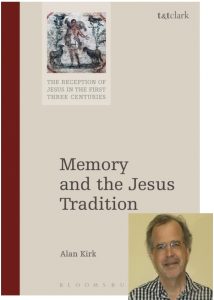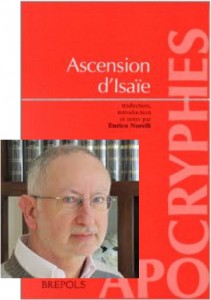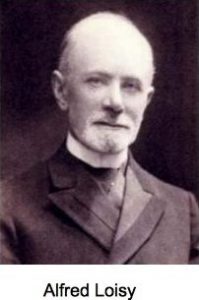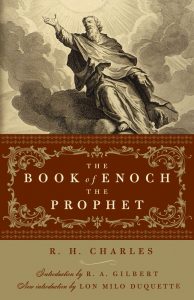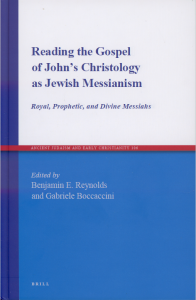A week ago James McGrath alerted readers to a new post by Tim O’Neill of History for Atheists commending it for its take down of “amalgam Jesus” theorists for supposedly uncritically and emotionally concocting excuses to disbelieve in a historical Jesus. It has taken me a week since that alert but I have finally caught up with O’Neill’s Jesus Mythicism 4: Jesus as an Amalgam of Many Figures. His primary target is one L. Aron Nelson a.k.a “Aron Ra” 9 whom he presents as someone bearing
all the hallmarks of someone who has educated himself on the subject, without much idea of what is scholarly and credible and what is not.

With that introduction we should expect to be informed of some of the scholarly responses to the ensuing arguments he critiques. (To avoid an over lengthy post I will focus on but one point in O’Neill’s essay and that will be his rebuttal of the claim that the Jesus of the gospels was to some extent based on Jesus of Ananias in Josephus’s account of the Jewish War, written some time between 74 and 79 CE. Other points can be addressed separately if warranted.)
Despite O’Neill’s attempt to address one who in his eyes had not “much idea of what is scholarly” and “credible” in the eyes of scholars, O’Neill himself fails to indicate that he has any awareness of the relevant scholarly discussions, let alone that those scholarly discussions essentially undermine almost everything he writes. His own attempts at take-down arguments have gained no traction among scholars engaged with this particular question. In this post I will provide the evidence from scholars that they do find the parallels significant and worthy of serious discussion with some suggesting that one Jesus was indeed in part based on the other.
Here is the Josephus passage with the key areas to be compared in red.
The Whiston translation of Josephus’ War of the Jews (6.300-309)
But, what is still more terrible, there was one Jesus, the son of Ananus, a plebeian and a husbandman, who, four years before the war began, and at a time when the city was in very great peace and prosperity, came to that feast whereon it is our custom for every one to make tabernacles to God in the temple, began on a sudden to cry aloud, “A voice from the east, a voice from the west, a voice from the four winds, a voice against Jerusalem and the holy house, a voice against the bridegrooms and the brides, and a voice against this whole people!” (Jer.7:34 LXX) This was his cry, as he went about by day and by night, in all the lanes of the city. However, certain of the most eminent among the populace had great indignation at this dire cry of his, and took up the man, and gave him a great number of severe stripes; yet did not he either say any thing for himself, or any thing peculiar to those that chastised him, but still went on with the same words which he cried before. Hereupon our rulers, supposing, as the case proved to be, that this was a sort of divine fury in the man, brought him to the Roman procurator, where he was whipped till his bones were laid bare; yet he did not make any supplication for himself, nor shed any tears, but turning his voice to the most lamentable tone possible, at every stroke of the whip his answer was, “Woe, woe to Jerusalem!” And when Albinus (for he was then our procurator) asked him, Who he was? and whence he came? and why he uttered such words? he made no manner of reply to what he said, but still did not leave off his melancholy ditty, till Albinus took him to be a madman, and dismissed him. Now, during all the time that passed before the war began, this man did not go near any of the citizens, nor was seen by them while he said so; but he every day uttered these lamentable words, as if it were his premeditated vow, “Woe, woe to Jerusalem!” Nor did he give ill words to any of those that beat him every day, nor good words to those that gave him food; but this was his reply to all men, and indeed no other than a melancholy presage of what was to come. This cry of his was the loudest at the festivals; and he continued this ditty for seven years and five months, without growing hoarse, or being tired therewith, until the very time that he saw his presage in earnest fulfilled in our siege, when it ceased; for as he was going round upon the wall, he cried out with his utmost force, “Woe, woe to the city again, and to the people, and to the holy house!” And just as he added at the last, “Woe, woe to myself also!” there came a stone out of one of the engines, and smote him, and killed him immediately; and as he was uttering the very same presages he gave up the ghost.
Tim O’Neill associates the argument with Richard Carrier and appears not to be aware that Carrier was presenting a well-known observation among professional scholars.
Here at least we have someone called Jesus who is obviously not Jesus of Nazareth and his story has at least some parallels with elements in the Jesus stories. The argument that these parallels indicate derivation and that the story of Jesus was in part based on that of ben Ananus is articulated in detail by … Richard Carrier …
Carrier actually credits the argument to two other highly renowned scholars, Theodore J. Weeden, Sr. and Craig Evans:
Indeed, even how Mark decides to construct the sequence of the Passover narrative appears to be based on the tale of another Jesus: Jesus ben Ananias, the ‘Jesus of Jerusalem’, an insane prophet active in the 60s ce who is then killed in the siege of Jerusalem (roughly in the year 70). His story is told by Josephus in the Jewish War, and unless Josephus invented him, his narrative must have been famous, famous enough for Josephus to know of it, and thus famous enough for Mark to know of it, too, and make use of it to model the tale of his own Jesus. Or if Josephus invented the tale then Mark evidently used Josephus as a source. Because the parallels are too numerous to be at all probable as a coincidence.86 Some Mark does derive from elsewhere (or matches from elsewhere to a double purpose), but the overall scheme of the story in Josephus matches Mark too closely to believe that Mark just came up with the exact same scheme independently. And since it’s not believable that Josephus invented a new story using Mark, we must conclude Mark invented his story using Josephus—or the same tale known to Josephus. . . . There are at least twenty significant parallels (and one reversal)…
86. Theodore Weeden, ‘Two Jesuses, Jesus of Jerusalem and Jesus of Nazareth: Provocative Parallels and Imaginative Imitation’, Forum N.S. 6.2 (Fall 2003), pp. 137- 341; Craig Evans, ‘Jesus in Non-Christian Sources’, in Studying the Historical Jesus (ed. Chilton and Evans), pp. 443-78 (475-77).
(Carrier, 428-29)
Given the tone of Tim O’Neill’s study up to this point a reader will expect to be led to a conclusion that “Carrier’s parallels” (they are in fact the parallels presented by scholars in the peer-reviewed scholarly literature) are going to be proved nonsensical or at best without significance. Will O’Neill’s rebuttals equally apply to two highly notable New Testament scholars, Weeden and Evans?
Carrier’s list of parallels are derived from Weeden so in the interests of presenting as fully as possible what is found among the peer-reviewed scholarly publications I will give here Evans’ list of parallels from another essay of his (I do not yet have access to the one Carrier cited): Continue reading “Better Informed History for Atheists — Scholars assess the Two Jesus Parallels”

